#Castra Regina
Text
9-Euro-Ticket-Tours: Regensburg II - Castra Regina
9-Euro-Ticket-Tours: Regensburg II – Castra Regina
Castra Regina war ein römisches Legionslager. Errichtet wurde es für die dritte italische Legion im Jahr 175 als Hauptquartier, wo die obere Donau in ihrem Verlauf den nördlichsten Punkt erreicht. Castra Regina bestand aus dem Legionslager, aus der zugehörigen Zivilstadt, einem großen Friedhof und aus einigen Heiligtümern und Tempelanlagen. Die sichtbaren römischen Baureste des Lagers sowie die…
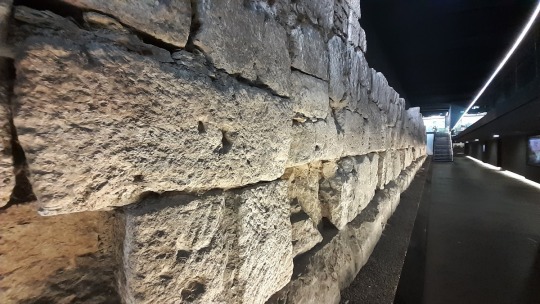
View On WordPress
#Augsburg#Augusta Vindelicum#Castra Regina#Donau#Donaulimes#Limes#Mark Aurel#Porta Praetoria#Raetia#Römer#Römerkastell#Römerlager#Regensburg#Rom#UNESCO Welt-Kulturerbe#Unesco Weltkulturerbe#UNESCO-Weltkulturerbe
0 notes
Text
Kupferstich Regensburg

Kupferstich Regensburg · Topographie und Geschichte
Die Stadtbeschreibung des Emmeraner Mönchs Otloh um 1050 teilt die Stadt in drei Bezirke, die Königsstadt, die geistliche Stadt und die Stadt der Kaufleute und Bürger. Damit ist umrissen, welche Kräfte Regensburg nach dem Untergang des römischen Imperiums formten.
Hatte Regensburg als römisches Legionslager »Castra Regina« die Überwachung eines wichtigen Donauübergangs und gefährlichen Einfalltores ins Innere Germaniens gegenüber der Naab- und Regenmündung zur Aufgabe, so wuchsen, nachdem die Unruhe der Völkerwanderung abgeklungen war, im Mittelalter gleichermaßen weltliche und geistliche Macht als fränkisches Kaisertum und römisches Papsttum, letzteres in seinen Bischöfen miteinander rivalisierend heran.
Zu dem Wettstreit zwischen diesen beiden großen Gegnern trat dann noch nach der Jahrtausendwende der Stand der Kaufleute und Bürger. Der Schwerpunkt des königlichen Bezirks lag im Osten der Stadt bei der Pfalz und in dem Viertel, das heute noch mit »Königshof« bezeichnet wird. Die »Alte Kapelle«, ursprünglich die Kirche der Königsleute wurde 1009 mit dem Bamberger Domstift verbunden, der königliche Besitz im Pfalzbereich durch Schenkungen weitgehend zerschlagen.
Der Bezirk der Bürger und Kaufleute lag im Westen. Dieser aufstrebende Stand war es, der die engen Grenzen des alten Lagers durchbrach. Als die Stadt nicht mehr die bevorzugte Königspfalz war, wurde die Tüchtigkeit ihrer Bürger neuer Antrieb zu weiterer Machtentfaltung. Der bedeutende Fernhandel verhalf Regensburg nun zu Ansehen.
In Venedig führten Regensburger Kaufleute den Vorsitz. Die Handelsbeziehungen reichten von Konstantinopel bis nach Brüssel und Antwerpen, von Prag über Krakau, Lemberg, Kiew bis Nowgorod. Die Kreuzheere Kaiser Konrads III. und Barbarossas sammelten sich in Regensburg und zogen von hier gegen Byzanz und ins Heilige Land.
Der Aufstieg der Kaufmannschaft fand seinen Ausdruck im Bau der »Steinernen Brücke«, deren Grundstein 1135 gelegt wurde. Der Höhepunkt des Handels und der Entwicklung Regensburgs überhaupt war im 14. Jh. erreicht. Von da an setzte der allmähliche Abstieg ein. Der Welthandel verlagerte sich westwärts. Städte wie Augsburg, Ulm und Nürnberg übernahmen das Erbe Regensburgs.
Als am beständigsten erwies sich in der Zeit des Niedergangs die geistliche Macht. Der letzte Kanzler, Fürstprimas des Rheinbundes, Kurfürst von Mainz und Großherzog von Frankfurt Carl von Dallberg zog sich auf den Regensburger Bischofsthron zurück. Zwar hatte der von 1663 bis 1806 im Rathaussaal tagende »Ewige Reichstag« der Stadt noch etwas von dem alten Glanz verliehen, doch war dieser nur einer Zeit entnommen, die längst vorüber war.
So trieb der uralte Baum, mit dem Regensburg zu vergleichen ist, dessen Wurzeln in unergründliche Tiefen der Vergangenheit reichen und dessen mächtige Krone hoch aufragt, alle Jahre seine Blätter wieder bis in unsere Gegenwart; eine Blüte aber wie im Mittelalter hat er seitdem nicht mehr gehabt.
Kupferstich Regensburg · Topographie und Geschichte · Ort
Read the full article
0 notes
Text
Final Exam Worksheet: Latin pt 1
Horatius semper adiuuabat amicum suum Maecenatem. sed dum quiescit in fundo, quem amicus suus sibi dederat (nam Horatium urbis taedebat), carmina meditandi causā, omnes Romani timebant ne bellum ciuile iterum fieret. utinam hostes pacem servarent! tandem, ut Octauianus sensit, cum Antonio pugnandum erat. tota Italia heredem Iulii Caesaris ducem belli poscebat ut hostes suos uinceret. Octauianum bellum gerere ferociter oportuit!
Antonius Cleopatram, quae omnibus bonis Romanis odio diu erat, uxorem suam pronuntiauit. Octauianus ipse audiuit eum istam reginam iam amare et Octauiam amisisse; sensit igitur quid illi in animo haberent; Brundisium profectus est ut copias trans mare duceret. ibi castra sua non procul ab castris Antonii posuit. Agrippa, qui erat optimus dux Octauiano, ita uicit hostes ut in mari dominaretur. Antonius ueritus ne milites sui fame perirent, pugnam uitare coactus est. subito Cleopatra ad Aegyptiam fugit. eam fugientem cum uidisset Antonius, sibi rogabat: “quid faciam?” deinde gubernatori imperauit ut nauem reginae sequeretur. milites Antonii, spe depositā, se dediderunt; quos Octauianus ualde humane tractauit. si Antonius Cleopatraque cum Octauiano proelium iam commisissent, ei resistere diu non potuissent.
--
Horatius was always helping his friend Maecenas. While he rests on the farm, which his friend had given to him (for Horatius was tired of the city), for the sake of planning out poems, all the Romans were fearing that civil war would happen. If only the enemies were keeping the peace. Finally, as Octavian realized, he had to fight with Antony. All of Italy was demanding the heir of Julius Caesar to be leader of the war in order to conquer their enemy. It behooved Octavian to wage war ferociously.
Antony proclaimed Cleopatra, who for a long time was hateful to all good Romans, his wife. Octavius himself heard that he now was in love with that Queen and had sent Octavia away; he realized what they had in mind; He set out for Brindisi in order to lead his forces across the sea. There his camp was pitched not far away from the camp of Antony. Agrippa, who was Octavian's best commander, defeated the enemy in such a way that he dominated the sea. Antony, fearing that his soldiers would perish from hunger, was compelled to avoid battle. Suddenly Cleopatra fled to Egypt. When Antony had seen her fleeing, he asked himself: “What am I to do?” He ordered the pilot to follow the ship of the queen. The soldiers of Antony, having given up hope, surrender themselves; whom Octavian treated very humanely. If Antony and Cleopatra had joined in battle with Octavian at that time, they would not have been able to stand against them for a long time.
1 note
·
View note
Text
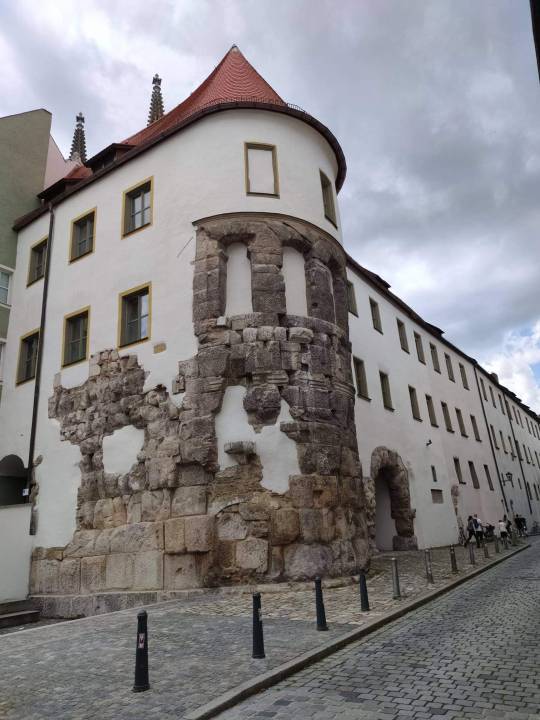
Las ruinas de un antiguo fuerte romano en una edificación actual de Ratisbona, Alemania. Corresponden a los restos de la muralla y una torre de Castra Regina, fuerte de 179 d. C. al que la Legio III Italica estaba adscrito para defender el «limes» danubiano.
The ruins of an ancient Roman fort in a current building in Regensburg, Germany. These are the remains of the wall and a tower of Castra Regina, a fort from 179 AD assigned to Legio III Italica to defend the Danubian "limes".
#roman history#ancient architecture#ancient history#historia antigua#historia#military history#history#architecture#archaeology
154 notes
·
View notes
Text
Donau 2020 - Tag 4
Herrschaften!
Heute Morgen fuhren wir direkt nach dem Frühstück in die Domstadt Regensburg. Und wie der Name Regensburg bereits impliziert gab es Regen - und zwar jede Menge Regen....
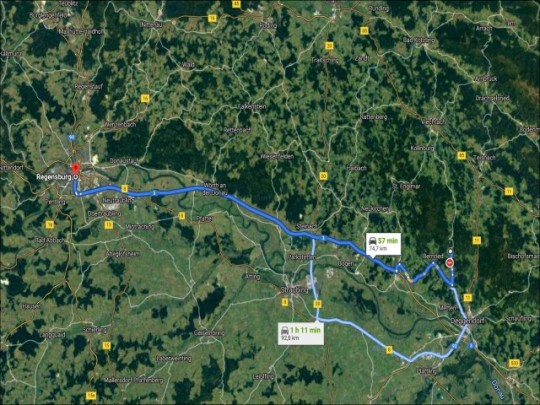
Es schüttete auf der Fahrt wie aus Kübeln. Dafür hatten wir bei der Parkplatzsuche Glück, denn es war nicht viel los - was natürlich auch dem grauenhaften Wetter geschuldet war. Wir parkten sehr praktisch auf dem “Alten Kornmarkt”, nur wenige Meter vom Dom entfernt.
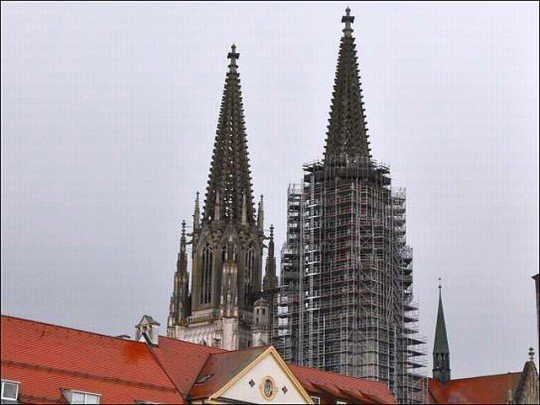
Was bietet sich bei einer solchen Wettersituation hervorragend an? Natürlich eine geführte und erklärte Stadtrundfahrt mit der geschlossenen Bimmelbahn! Die Fahrt startet direkt vor dem Hauptportal des Doms...

....und führt etwa 45 Minuten zu den wichtigsten Punkten der Altstadt von Regensburg. Die Hauptsprache ist natürlich Deutsch und für 8 weitere Sprachen kann ein Kopfhörer ausgeliehen werden.
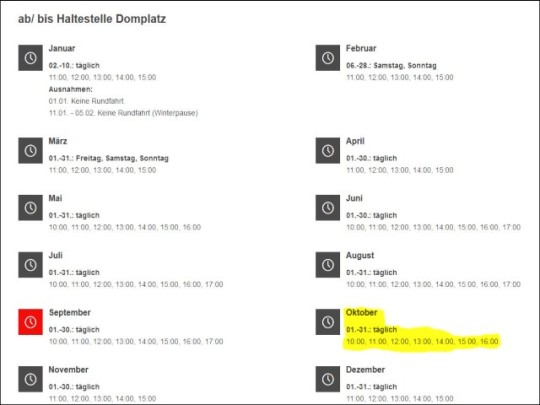
Ab 10 Uhr morgens fährt die Bimmelbahn alle Stunde ab. Tickets gibt es an einem mobilen Verkaufsstand, ebenfalls direkt vor dem Hauptportal.
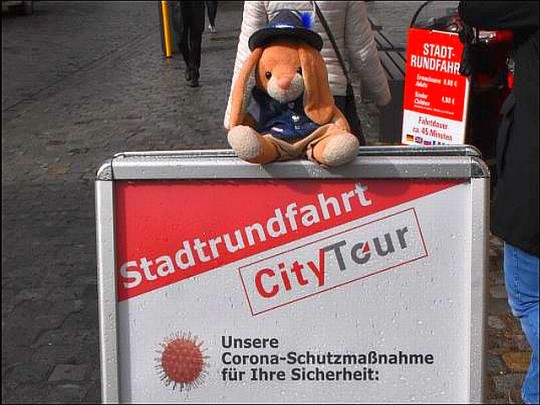
So tuckerten wir, im Trockenen sitzend, durch Regensburg und lauschten den interessanten Erklärungen zur Stadthistorie. Die Fenster lassen sich zu allen Seiten öffnen, was das Fotografieren während der Fahrt naturgemäß erleichtert. Als die Tour beendet war - man glaubt es kaum - kam die Sonne heraus und der Himmel war zusehens blauer und blauer. Was hatten wir ein Glück!

Bei Regensburg handelt es sich um die besterhaltene mittelalterliche Großstadt in Deutschland und sie gehört sogar zum UNESCO Welterbe. Bereits die Römer errichteten am nördlichsten Punkt der Donau das mächtige Kastell Castra Regina, dessen Reste bis heute noch zu sehen sind.
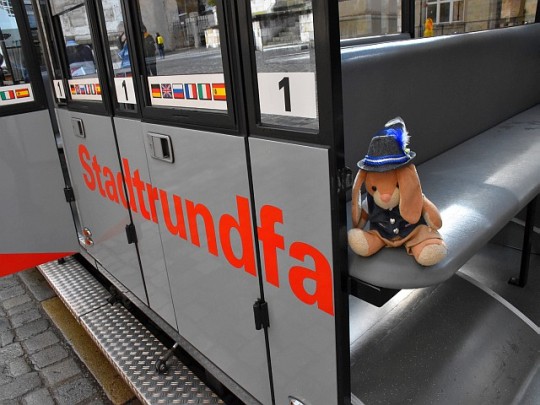
Die bayerischen Herzöge machten Regensburg zu ihrer ersten Hauptstadt. Von der bedeutenden Bischofsstadt ging im 19. Jahrhundert die Christianisierung des Ostens aus.
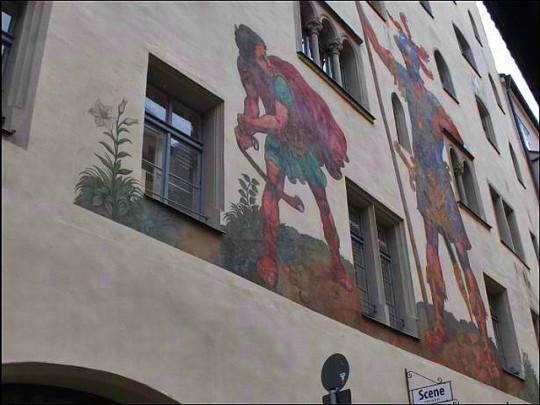
Nächster Punkt für unsere Besichtigungstour: natürlich der weltberühmte Dom von Regensburg. Der Dom St. Peter in Regensburg ist die bedeutendste Kirche der Stadt und zugleich die Kathedrale des Bistums Regensburg.

Die weit sichtbaren Türme des Domes bilden den Mittelpunkt von Regensburg. St. Peter wurde etwa ab dem Jahr 1260 erbaut. Der Regensburger Dom ist ein Hauptwerk der Gotik in Süddeutschland und die einzige gotische Kathedrale Bayerns.

Weltberühmt ist auch der Knaben-Chor des Regensburger Doms: Die Regensburger Domspatzen. Auch sie blicken auf eine über 1000-jährige Geschichte zurück.
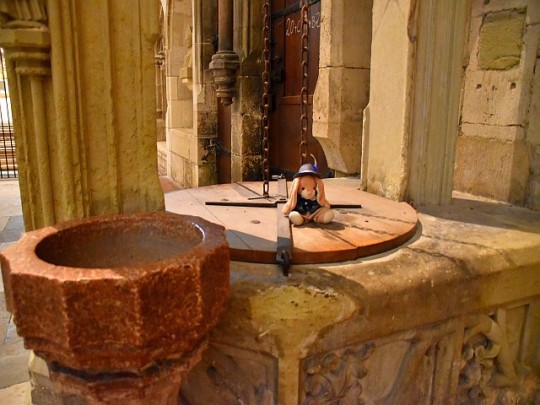
Nach soviel göttlicher Eingebung war uns jetzt nach mehr weltlichen Dingen. So ging es für uns zum Schloß der berühmten Gloria: Ihre Durchlaucht Fürstin Gloria von Thurn und Taxis.
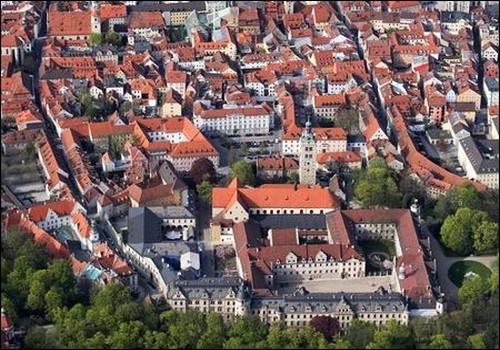
Seit dem Jahr 1812 ist das ehemalige Reichsstift und Benediktinerkloster St. Emmeram im Besitz des fürstlichen Hauses Thurn und Taxis. Im Laufe des 19. Jahrhunderts wurde der mehrere hundert Räume zählende Komplex zu einer fürstlichen Residenz, die heute zu den größten privaten Schlössern in Europa zählt, ausgebaut.
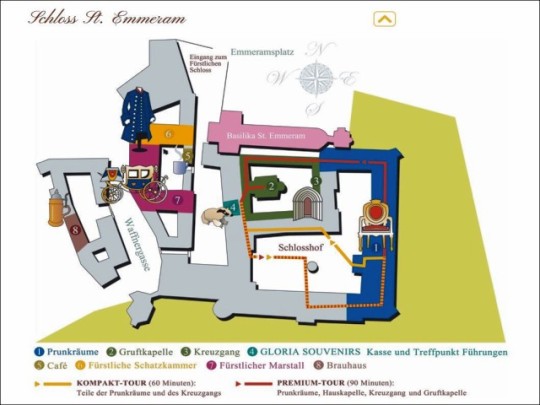
An der westlichen Seite des Schlosses befindet sich der Neue Marstall der Fürsten von Thurn und Taxis. Der Neue Marstall an der Waffnergasse ist eigentlich ein strenges, fürstliches »Dienstgebäude«.

Errichtet zwischen 1907 und 1911 beherbergte es Werkstätten, Kutschen und vor allem bis zu 100 Reit- und Kutschierpferde. Der damalige fürstliche Architekt Max Schultze hat das Gebäude entlang der alten Stadtmauer perfekt an die mittelalterliche Situation mit der Emmeramer Toranlage angepasst.
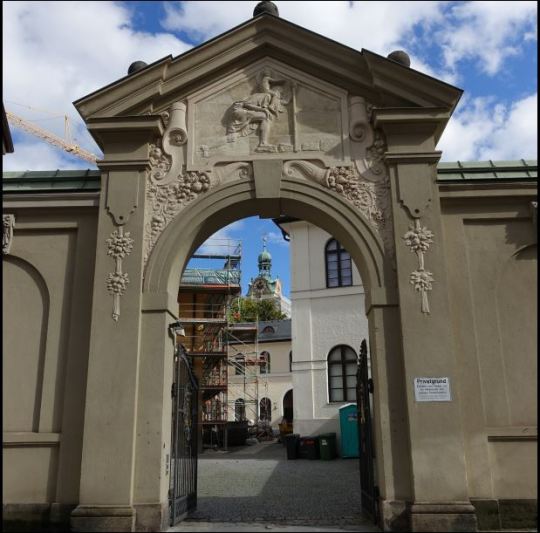
Die Gebäudenutzung wie sie seit dem 14. Jahrhundert – also zur Klosterzeit von Sankt Emmeram – bereits nachgewiesen ist, blieb die gleiche.
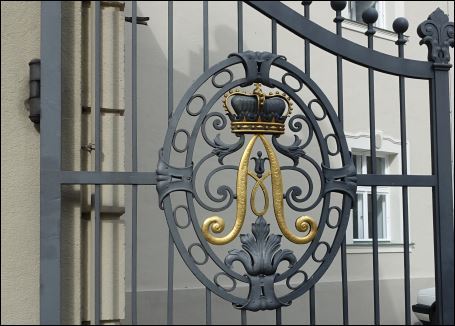
Die Pferde- und Kutschenzeit ist längst vorbei, eine neue Nutzung dieser imposanten Gebäude wurde notwendig. Auch hier wurde auf eine alte Emmeramer Klostertradition zurückgegriffen.

Seit alters her brauten die Mönche ihr eigenes Bier ganz in der Nähe, wo jetzt das neue Brauhaus am Schloss verschiedene Biersorten selber braut. Die alte Kutschenhalle hat sich in eine Brauerei und ein gemütliches Gasthaus gewandelt. Zudem ist der Schlosspark zum Biergarten geworden und zu einem beliebten Ausflugsziel.

Uns hat es gefallen und auch geschmeckt. Wir können dieses Lokal uneingeschränkt weiter empfehlen und würden jederzeit wieder hier einkehren. Preis/Leistung sind stimmig. Ein schöner Abschluß für unseren Aufenthalt in Regensburg!
Recht herzlichen Dank für die Aufmerksamkeit
Angie, Micha und der Hasenbär
#Wild-Berghof Buchet#Buchet#Bernried#Bayrischer Wald#Donau#Deggendorf#Regensburg#Schloss Emmeram#gloria von thurn und taxis#Thurn und Taxis#Brauhaus#Neuer Marstall
8 notes
·
View notes
Text
7. Regensburg, Germany
Regensburg is the original capital of Bavaria. It has the most preserved Old Town of any large Medieval city in Germany. Because of this, Regensburg is a legitimate candidate for the “most authentic German city.”
Besides Augsburg, a second Roman city along the Danube has a destiny to also become one of the great Germanic cities. The city is Regensburg, which actually has an old Celtic name, “Radasbona,” a name that pre-dates Roman times. In 90 A.D., the Romans choose Radasbona as a site for a fort. It sits along the longest river on the continent, upon the Northern-most apex of the Danube. This position makes Radasbona vital to the Roman defense of the Northern frontier. Because of this, the Roman fort becomes a site of real importance, and by the second century A.D., Marcus Aurelius sees the need to upgrade fortifications. He also declares the fort a “city,” and gives it a new name: “Castra Regina.” This translates in German to “Regensburg,” and in English to “Fortress on the River Regen.”
Seated at the intersection of major trade routes, yet also far to the East of the other Roman cities of Germania, Regensburg is a remote but comfortable enough location for a regional capital to develop, and that is exactly what happens. The region around Regensburg become known as Bavaria, because of the Bajuwaren, a Germanic tribe that lives there. Still within Roman times, a Catholic bishop seat develops in Regensburg, and as Rome falls, the bishop-seat falls naturally into Germanic hands. By 530, Regensburg becomes the first and the official capital of Bavaria, a political role that the city plays for the next seven centuries, under the Agilolfing ruling family. Finally, by the eighth century, the Carolingian dynasty takes over the Germanic world, and they produce the greatest monarch in Germanic history: Charlemagne. He sends the ecclesiastical section of his General Assembly to Regensburg. For a time, this puts Regensburg center-stage in the theology of the day, because the city has the most-concentrated collection of bishops in all Germanic Christendom.
A key controversy of Christianity in the Low Middle Ages revolves around the Spanish heresy of Adoptionism: the claim that Jesus is not literally a God, nor a Son of God, until he proves his devotion, at which point the Father brings him into the divine family by adoption. While this heresy gains popularity in parts of Germanic territory, the central role that the Bishopric of Regensburg plays in its condemnation entrenches the city as a conservative Catholic stronghold, representative of the greater Germanic mindset of the time. This reputation significantly increases the power of Regensburg, and not long after this, when the descendants of Charlemagne partition their massive Empire into three large parts, they choose Regensburg to be the capital of the Eastern-most of these Imperial sections, in 843, under Emperor Louis the German. In other words, Regensburg becomes the second Imperial Seat of the Holy Roman Empire, the greatest Germanic State of all history. In the European order, this puts Regensburg on the same footing as either Rome or Paris, for a time. Of course, no Imperial Seat lasts for long in the tumultuous Holy Roman Empire. Suffice it to say that Regensburg is one of many co-capitals in the Middle Ages of Germany.
While Mainz is the true center of Germanic Christendom, Regensburg represents Eastern Germanic Christianity. Because of this, the city fulfills a uniquely important and unexpected role as bridge between the Germanic West and the Slavic East. A strong relationship begins in 845, when fourteen Bohemian princes suddenly arrive at the gates of Regensburg, in search of Western baptism. The baptisms occur at St. John’s church, in the Old Town of Regensburg, and this represents the official beginning of the Christianization of the Czech people.
Structurally within Europe, this joyous occasion forges an intimate tie between the regions of Bavaria and Bohemia, a tie which lasts for all time. The Regensburg-Prague connection specifically develops when the Bishopric of Regensburg becomes the official mother to the diocese at Prague. This is how Czech lands come to forsake Eastern Orthodox Christianity and adopt Roman Catholic, and the partial “Westernization” of Czech Culture goes back to these roots. The incorporation of the entire Slavic Kingdom of Bohemia into the Germanic world is eventually a political reality, and like Regensburg, Prague is also destined to one day become one of the temporary seats of the Holy Roman Empire. Regensburg is thus a bridge between two worlds, East and West. Perhaps the city can thank the extremely long, Eastward-flowing Danube River, for making this cultural connection possible.
After Regensburg establishes itself as an early Medieval bulwark of Germanic religion and politics, the city also begins a new era of material and economic dominance in Europe, starting in the years 800 to 1000, when the population of the city nearly doubles to 40,000. At this point of the Low Middle Ages, Regensburg is the largest Germanic city, a status that lasts for over a century, until Cologne eclipses its population in the High Middle Ages. This puts Regensburg on a short list of alpha German cities throughout history.
Critically, in the twelfth century, mighty Regensburg changes the economic and developmental fortunes of the whole European continent, forever, when its architects finish the construction of the massive stone bridge that crosses over the previously-uncrossable Danube River. This significant accomplishment in Medieval design links South to North. Specifically, Regensburg links Italian cities such as the prosperous independent Republic of Venice with Germanic cities to the North, primarily Lübeck, the center of the Hanseatic League, the biggest trade union of the Middle Ages. Essentially, Regensburg is the central crux of a new era of European trade, even more impactful from an economic perspective than the East-West bridge that Roman Emperor Constantine originally builds across the Rhine, in Cologne. Regensburg has the most important bridge in Medieval history, and in historical context, its construction is so well-timed, that it literally corresponds to the booming rise of cities, across the entire continent. Before the Regensburg bridge over the Danube, there just are not that many cities in Europe. The importance of the stone crossing can hardly be overstated, and it still stands to this day, at the gateway of the city, an awe-inspiring structure that is structurally impressive as well as Classically beautiful.
Because of its North-South bridge, as well as its natural position along the East-West Danube, Regensburg becomes just as prosperous as Cologne, a model Medieval trade city. Regensburg also defines what is now the world-famous Bavarian culture of global commerce. In the thirteenth century, Regensburg becomes a Free Imperial City, or autonomous city-state, within the Holy Roman Empire. This status provides significant trade freedom that attracts several wealthy banking families, who happily make their residence in lovely Regensburg. These developments constitute the beginnings of banking in Bavaria, the region that becomes the center of all European banking when the families of Augsburg inherit the entire banking Empire of the Medici in Florence. To this day, Bavaria is the wealthiest of all German provinces, and that is thanks to the pioneering banking efforts of Regensburg and Augsburg.
In the Late Middle Ages, Augsburg eclipses Regensburg economically, and Nuremberg takes over as the capital of Bavaria. Because of this, official power abandons Regensburg until the seventeenth century. Oddly enough, in spite of its early and very powerful Catholic roots, Regensburg, just like Augsburg, defies the traditions of Bavaria as a whole and openly accepts Protestantism in the Reformation. That is, the people of the Free Imperial City of Regensburg become fully Protestant. However, the original Catholic Bishopric within Regensburg maintains its permanent seat, with its own autonomous status. This makes two cities, technically, within Regensburg, one Protestant and one Catholic. Only a very powerful city like Augsburg or Regensburg could fight the staunchly-Catholic tradition of Bavaria and become a “mixed” city of dual denominations.
In addition, three separate Catholic churches attain autonomous status, within the walls of Regensburg. These are the beautiful abbeys of St. Emmeram, Niedermünster, and Obermünster. These three stand to this day as iconic symbols of the Medieval Old Town, and they assert total political autonomy, which makes them like three, miniature versions of the Vatican, within the walls of Regensburg. Some of the most subtle and beautiful views in all the city can be found in and around its church buildings.
Finally, in 1663, Regensburg enters back into the political conversation of Germanic Imperial Cities when the Imperial Diet of the Holy Roman Empire stops moving from city to city and finally comes to rest in Regensburg. This creates a new branch of government called the “Perpetual Diet of Regensburg,” and it represents an unprecedentedly stable form of Germanic Congress. It is essentially the foundation for any Modern notion of German democracy. Because of this, Regensburg sits right next to Vienna in importance as a political city at the sunset of the Holy Roman Empire. Overall, historians consider Regensburg to be one of the four main capitals in the history of the Empire.
While many great German cities tragically meet near or total obliteration during the Allied bombings of WWII, Regensburg, like no other city of comparable Medieval size, emerges incredibly lucky, with almost no damage to its Old Town. Then, as a continued twist of fortune, the economic hardship of the post-war environment proves so severe, within Regensburg specifically, that there is no effort to rush the construction of modern concrete buildings. Because of this, when conditions finally improve, Regensburg rises from the ashes of WWII with a surprise blessing: a weirdly, perfectly-intact Medieval city center. There is no other city like it. It is the most authentic large Medieval city in Germany to survive so well into the modern era.
Not only does Regensburg have the reputation as one of the most beautiful cities in the world, but any discussion of the “most authentic German city” would be impossible to take seriously, without it. No other city as powerful as Regensburg across so many eras of history presents such a well-preserved Old Town, undisturbed by war. How is it still standing? Such beauty, power and scope do not normally survive the tumult of Germanic history. A person could spend a lifetime in the city, exploring its cultural depths, and never exhaust the treasures, nor really even come close. It is one of the greatest cities in the world, where a seamless, uninterrupted timeline spans the Roman era through the entire Medieval Germanic era to the Modern, and that is precisely what makes the city such a fantastic place. A person who walks, bikes, rides the tram, or drives a car through the city will probably be shocked at how well a Medieval structure blends together with Modern practicality. Nobody who claims it as the “most authentic German city” would receive argument from anyone who know the city well. No wonder the entire Old Town has received protection from the UN as a World Heritage Site, an international recognition. It is a city that perfectly represents Germanic history.
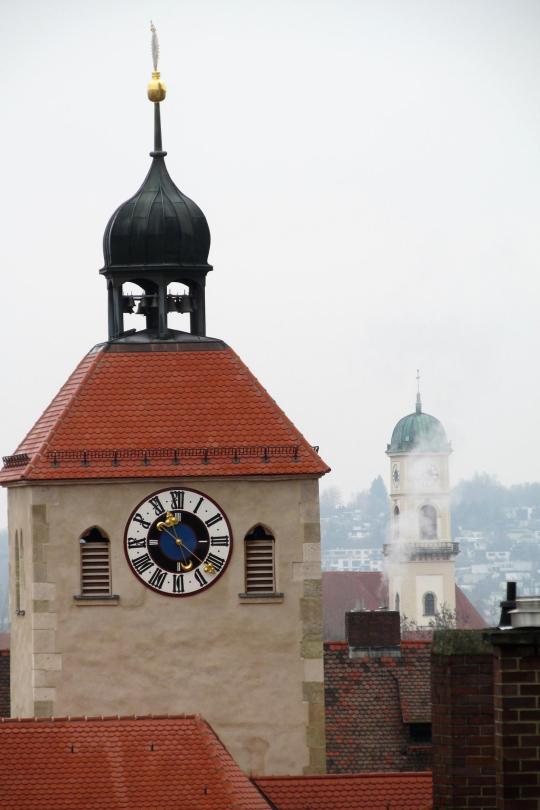
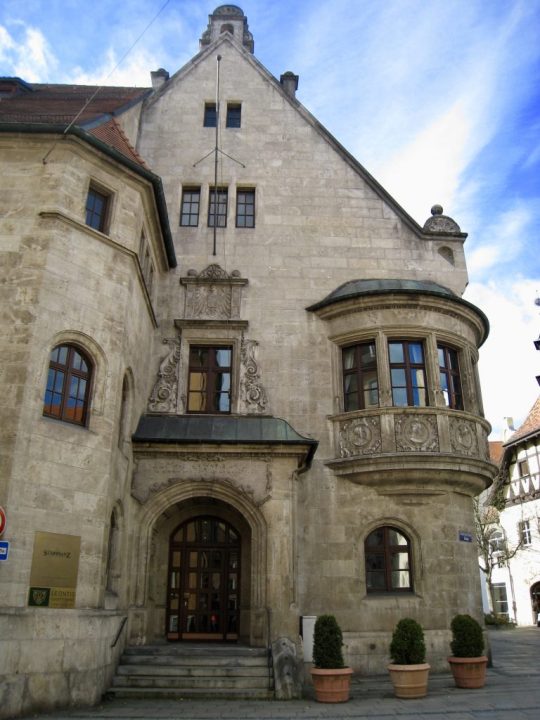

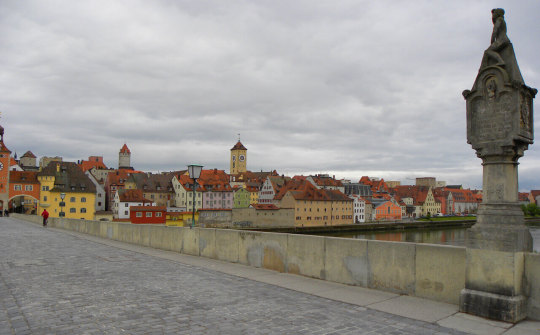

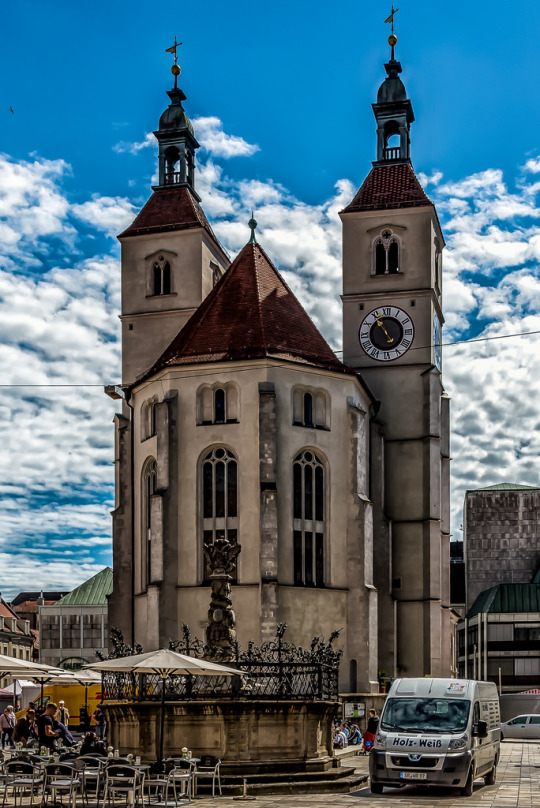


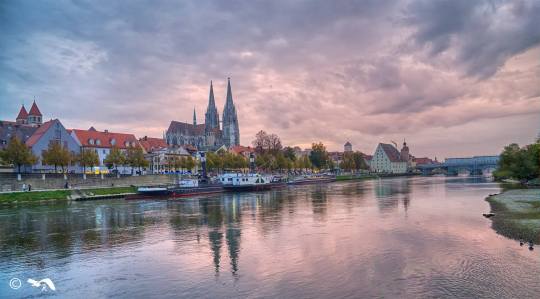

2 notes
·
View notes
Photo
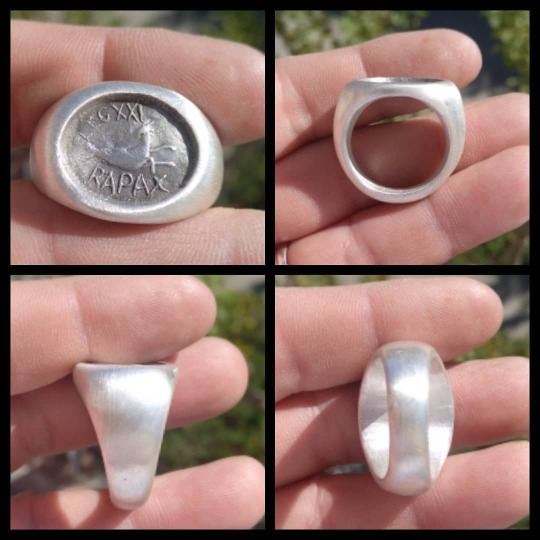
Leg XXI Rapax "depredadora". Legión romana creada en 31 a.C. por Augusto. El símbolo de esta legión era el capricornio. La legión fue desplazada al centro de Europa donde se acuartelaron en Castra Regina (hoy, Regensburg, Alemania), capital de la nueva provincia de Recia. Después del desastre militar de la batalla del bosque de Teotoburgo, donde las legiones XVII, XVIII y XIX Gemina fueron aniquiladas durante la revuelta de los queruscos liderados por Arminio, la XXI Rapax fue enviada como refuerzo a Germania Inferior. Durante este periodo compartió la base de Vetera (hoy, Xanten, Alemania) con la Legio V Alaudae. En 43 fue trasladada al campamento de Vindonissa (hoy, Windisch, Suiza), en Germania Superior. En el año de los cuatro emperadores. (68-69), la XXI Rapax apoyó las ambiciones de Vitelio, gobernador de Germania, y se incorporó al ejército que formó para descender hacia Italia y derrocar a Otón, participando en la primera batalla de Bedriacum. Vitelio acabó derrotado por Vespasiano que encontró nueva tarea para la legión: ayudar a dominar la revuelta bátava que había estallado en los actuales Países Bajos, sirviendo a las órdenes de Petilio Cerial. En 71 la rebelión había sido aplastada, y la legión permaneció en el zona, compartiendo campamento en Mogontiacum (hoy, Maguncia, Mainz, Alemania) con la Legio XIV Gemina. En 89 la legión apoyó la fallida tentativa de usurpación de Lucio Antonio Saturnino contra el emperador Domiciano. La rebelión acabó poco después, ya que Saturnino fue abandonado por sus tropas, pero la confianza de Domiciano en está unidad estaba quebrada, y, aprovechando el creciente conflicto con los dacios, la legión fue desplazada a Pannonia. Fue en esta provincia donde la legión fue aniquilada en 92 durante una campaña destinada a contener una invasión de sármatas, que habían cruzado el Danubio. https://www.instagram.com/p/CG8HIF3nzv8ZAOlUrDvBN5DW8bfCkYIr57k_Pk0/?igshid=ygsc47jh7vpn
0 notes
Text
9-Euro-Ticket-Tours: Regensburg I - in der Ostnerwacht
9-Euro-Ticket-Tours: Regensburg I – in der Ostnerwacht
Es geht wieder los! Erst am Vortag hatte ich die Walhalla bei Donaustauf besucht, dabei aber Regensburg nur gestreift, weshalb ich heute das Versäumte nachholen möchte. Bewaffnet mit einer Dose Kaffee fand ich mich frühzeitig am Münchner Hauptbahnhof ein, schließlich wollte ich einen Fensterplatz, was mir auch gelang.
Mein Plan: zum Regensburger Hauptbahnhof, mit dem Bus zum Ostentor und dann…
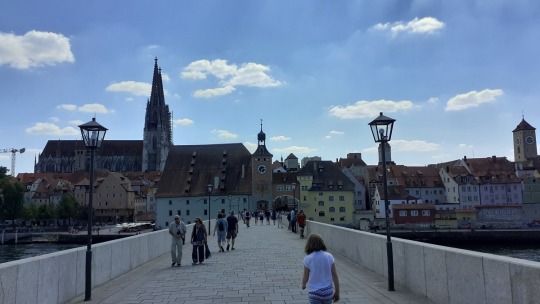
View On WordPress
#Castra Regina#König Maximilian II.#Königliche Villa#Ludwig Foltz#Maximilian II.#Ostenbastei#Ostentor#Ostenvorstadt#Ostnergasse#Ostnertor#Ostnerwacht#Regensburg#Villapark
0 notes
Photo
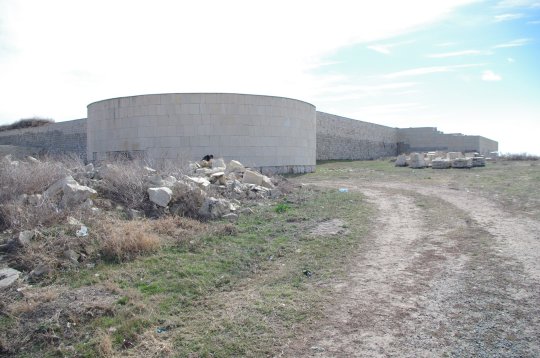
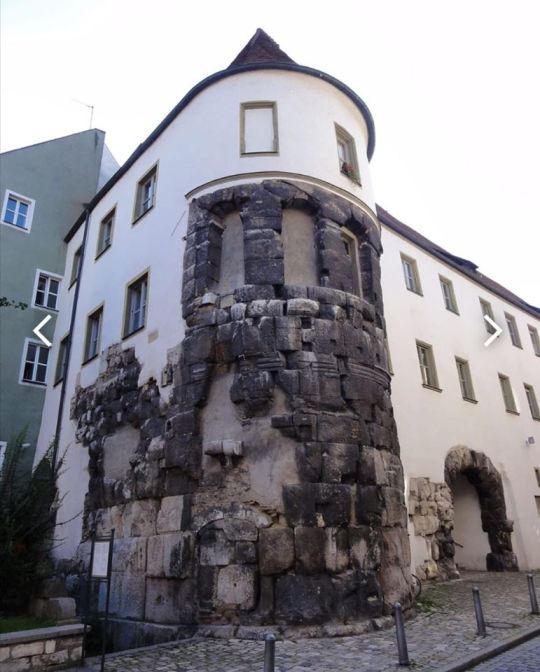
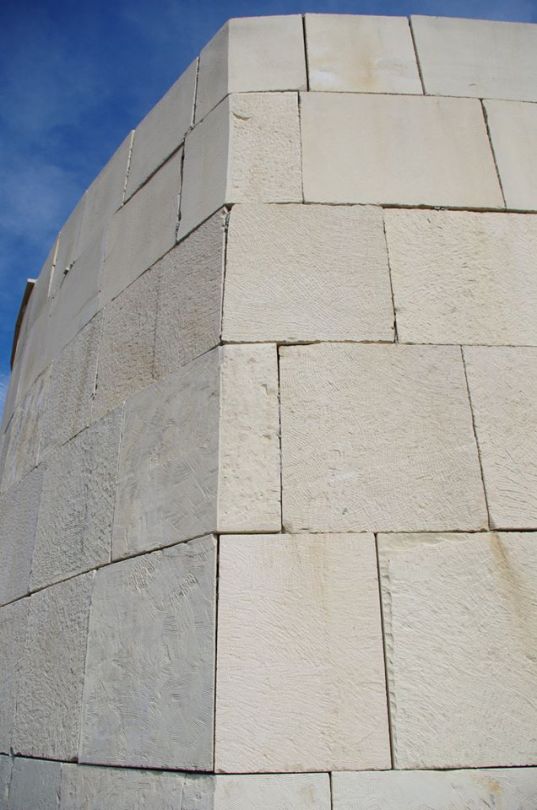
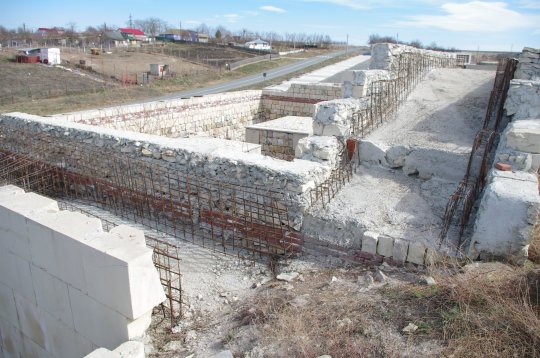
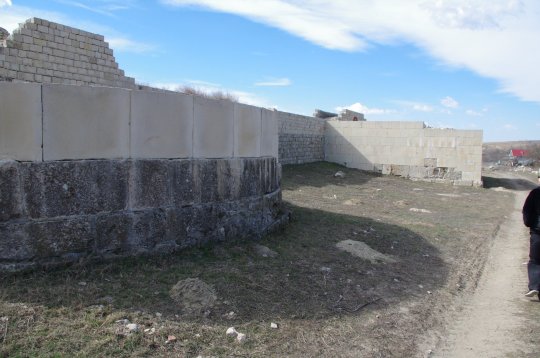
După super-scandalul de corupție din anii trecuți legat de șantierul de restaurare al cetății Capidavei, toamna trecută lucrările s-au reluat, la fel de prost. Așa am înțeles de la paznicii șantierului. Oricum grosul lucrărilor sunt rămase de acum 2 ani, de când în urma teribilului scandal de corupție, lucrările au fost blocate. Căci dincolo de corupție ceea ce se făcuse era grotesc. Beton, fier beton, pietre cioplite mecanic și apoi buceardate tor mecanic, dar cică cu iz ”vintage”. Mână de lucru ieftină, incompetentă și materiale scumpe, puse în operă prost. Poate poporului îi va place, mai ales dacă se vor găsi unii să le zică că e o străveche cetate dacică (e cu ”dava”, nu?), care uite, foloseau betonul și armătura de fier încă din antichitate.
În poza din mijloc aceiasi Romani (nu români), la ei in Germania, Castra Regina, Regensburg. De data asta, chiar originalul. Prezervat. Nu imitat de preistorici balcanici...
After many years, our monuments have suffered from a lack of funding, now European-funds restorations, destroy the monuments. Agree, the architects, those who approve the projects (Ministry of Culture, all sorts of commissions of incompetence) and often the craftsmen (construction companies) are to blame. But, after such a "restoration", the monument becomes a décor, a butafory, and the original substance decreases by 80%.
0 notes
Photo
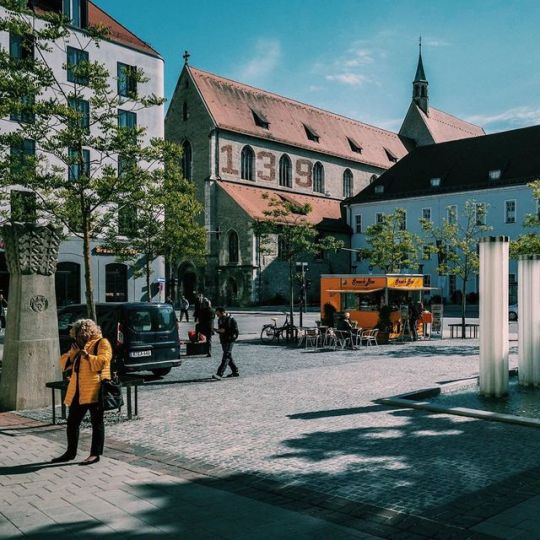
⠀ За год до постройки Колизея, на северном изгибе Дуная римляне поставили крепость Castra Regina. Именно от 79 года нашей эры ведёт историю сегодняшний немецкий Регенсбург — старейший город Баварии. Эталонный каменный мост от 1100 года и крупнейший католический Собор св. Петра, как символ старейшего епископства. Характерный шорох автомобильных колёс по тесячелетней брусчатке уводит мысли в сторону конского топота, но... это же 21 век, друзья! ⠀ Это 139 город, где я был. Каждая улочка — как открытка! Как оказалось, это один из самых посещаемых туристами-немцами городов. Двигаем дальше! •• . . . #регенсбург #regensburg #germany #германия #васязаграницей (at Regensburg, Germany) https://www.instagram.com/p/BxIafPMFCUW/?utm_source=ig_tumblr_share&igshid=1vv2ba62fgf31
0 notes
Photo
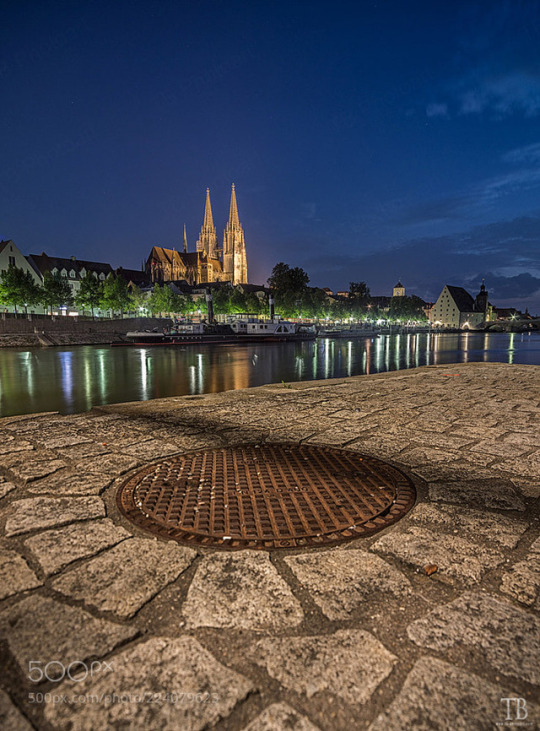
Castra Regina by tbuchmann
1 note
·
View note
Photo
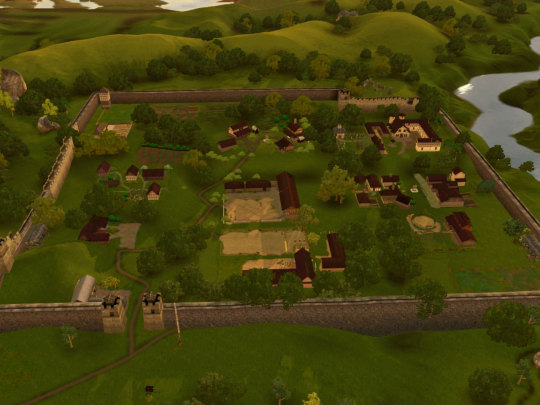
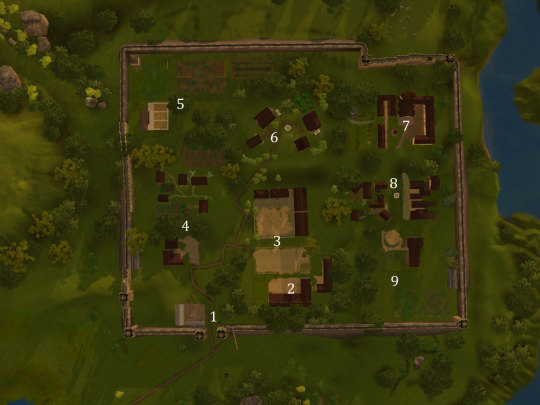
Home settlement of the Knights of The Order
(A tour for @tyrellsimsoficeandfire. This is a location for my story @ofchevalry, but I’m posting it here, because it’s more about the building process and inspiration. Click the links to read about the numbered places)
Gate Area
Barracks I
Barracks II
Village I
East Intervallum
Merchants’ Houses
Church, Cloister, Graveyard
Village II
West Intervallum
The whole settlement is inspired by early medieval Regensburg (Castra Regina / Ratisbon). During Antiquity there had been a Roman Castellum there with a solid stone wall and a town of crafts- and tradespeople around it. After the Roman Empire collapsed, the whole place was raided and partly burnt down by Germanic tribes - the people living there were romanised Germans themselves by then. When they rebuilt, they moved the whole city with its workers, merchants and even farms into what had formerly been the barracks. The bishop moved into the finest stone-building still standing - the watch-rooms of the back-entrance gate, facing the Danube. It's still part of the bishop's property today. The square wall served as a city wall for centuries to come - parts of it until the Napoleonic wars. When I came across this story at university, I knew this was the situation I wanted for my knights, although they are on the whole more Byzantine/Mediterranean inspired.
50 notes
·
View notes
Text
Personelle Kreation - die Siebte
In der Castra Regina ist er zu Haus
Zog wagemutig aus der Dreihelmstadt aus
Als Kevin bekannt im Bayernland
Studiert er nun mit Kopf und Verstand
Doch die Sicht nicht verschwommen
Kennt neben Pauken auch Trommeln
Im Meisters Kreise eilt er leise
Als Vorlieb vollen Gaukler ich einst ihn vernommen
Durch des Hebel´s Arm wird er bekräftigt
Sich neben dran der Physik ermächtigt
Mit dem beerenreichem Lorbeer bekränzt
Er der Geist des Kreises, selten begrenzt
© Tossidin
1 note
·
View note
Text
Alla curiosa e intrigante scoperta del significato dei nomi dei paesi
New Post has been published on https://www.aneddoticamagazine.com/it/alla-curiosa-e-intrigante-scoperta-del-significato-dei-nomi-dei-paesi/
Alla curiosa e intrigante scoperta del significato dei nomi dei paesi
Mamma mia che brutta parola! “Toponimo”. Un vocabolo che fa venire
alla memoria mille cose strane fuorchè quella esatta, invece è uno dei termini più affascinanti ed interessanti che ci sia. Nel suo specifico tale parola proviene dal greco, ed è composta dalle parole tòpos = luogo e onoma = nome, infatti la toponomastica (altra terribile parola) è lo studio dei nomi dei luoghi, ed una materia bellissima che attraversa nello stesso tempo altre materie, come la storia, la geografia, la glottologia (n.d.r: lo studio delle lingue) e la filologia (n.d.r: l’insieme delle discipline che ricostruiscono i documenti letterari alla loro corretta interpretazione). Come tutti sanno ogni nome di luogo, città o paese ha dietro di se una storia molto antica che al suo interno racchiude un significato nascosto che non sempre si conosce e allora vi siete mai chiesti come mai il vostro paese si chiama proprio così? Da dove deriva il suo nome? Qual’è il suo significato? Avete mai notato che alcuni dei paesi garfagnini hanno dei nomi composti, altri invece sono apparentemente indecifrabili, mentre altri ancora contengono un nome di un santo?
Il paese del Poggio
I toponimi hanno di fatto un origine molto varia, ad esempio possono derivare da alture del terreno e d’impulso ecco mi viene in mente il paese del Poggio (comune di Camporgiano) che si è formato difatti originariamente sul Colle della Capriola, o sennò possono nascere da cime, passi, valli, corsi d’acqua, boschi, colture, miniere e attività lavorative in genere e vediamo in questo caso paesi come Fornovolasco che deve la sua denominazione a dei forni legati alla fusione del ferro, o Fornaci di Barga che deve ricercare le proprie radici etimologiche sempre intorno ad un forno, ma che stavolta serviva però per cuocere mattoni. Ma sopratutto i nostri paesi hanno legato il proprio nome a una persona, che in origine poteva essere il fondatore, il feudatario o il proprietario di quell’appezzamento di terreno.
Le attività dei coloni romani in un mosaico del III secolo
Un “trucchetto” per capire ancor di più l’origine dei borghi (in questo caso la regola è generale) sta nell’osservare come termina il nome del proprio paese o città che sia e vediamo che quelli che terminano con il suffisso ano e ana sono di origine latina, mentre ago–aga–ico–ica sono di derivazione gallica, ciò che finisce in engo è di chiara genesi germanica. Tornando alle località che hanno i suffissi ano-ana, questi con ogni probabilità si sono formati dal nome del proprietario del terreno sul quale e poi sorto l’insediamento, per ben chiarire portiamo il caso di Gallicano, e vediamo appunto che “fundus Gallicanus“, significa fondo (agricolo) appartenente a Gallicanus. Da non tralasciare sono i toponimi con i nomi religiosi, questi luoghi verosimilmente sono di origine medievale (Pieve, Badia, Angeli e così via…)e in particolare i nomi dei paesi che provengono direttamente da un santo si chiamano niente di meno che “agiotoponomi” (altro parolone) e in Garfagnana da questo punto di vista possiamo portare una miriade d’esempi: San Michele (Piazza al Serchio), San Romano, San Pellegrino in Alpe…Altra curiosità intrigante è vedere che ci sono nomi che vengono da viabilità antiche e di conseguenza alludono alle miglia romane, caso esemplare nella provincia di Lucca sono le località di Sesto di Moriano (sextum lapidem), Valdottavo (octavum lapidem) e Diecimo (decimun lapidem) che segnalavano le miglia sull’antica Via Clodia.
L’antica Via Clodia
Molto comuni inoltre sono quei toponimi garfagnini(e non solo garfagnini) che riprendono l’appellativo dalla presenza in loco di antichicastelli, fortezze o anche torri, lampante l’esempio nostrano di Castelnuovo Garfagnana, Castiglione o Castelvecchio Pascoli.
Sia chiara una cosa, non sempre è possibile risalire all’origine del luogo, origine persa ormai nel tempo, a volte è possibile fare delle ipotesi, ed è quello che farò adesso, naturalmente non sono mie personali supposizioni, ma di studiosi dell’argomento che hanno cercato di dare un perchè del nome ai paesi della Garfagnana. Per non fare “torto” a nessuno faremo però un excursus sui comuni, uno per uno. Cominciamo da…
Camporgiano e la sua rocca
Camporgiano: L’origine del toponimo è incerta e anche se non sembra questo è un nome composto, la prima parola deriva dal latino “campus” (campo). La seconda parola potrebbe avere origine dal nome della vicina località “Rogiana” (ora Poggio San Terenzio), oppure dal latino “hordeum” (orzo), con significato globale di campo coltivato a orzo.
Careggine: Per alcuni questo nome è derivante da “Caricinum” o “Cariginae” e starebbe a significare “campo della regina” e se come si presume fosse riferito ad un accampamento militare romano varrebbe a dire “campo a capo di altri castra (intesi come accampamenti)”. Altra ipotesi vorrebbe che il nome nascesse da “Pagus Caricius“, in riferimento ad una pieve edificata secondo la tradizione paleocristiana sui “pagi” (villaggi rurali), in alternativa un luogo ricco di “carices“, ovvero giunchi.
Castelnuovo Garfagnana: Il nome fa riferimento ad un “Castrum Novum” ossia ad un nuovo castello di costruzione recente rispetto ad uno già esistente.
Il Castello del Leone: Castiglione – Garfagnana
Castiglione Garfagnana: Tale appellativo risale al periodo della dominazione romana quando si costruivano i “castra” (cioè di fortificazioni). Tra queste fortificazioni c’era “Castrum Leonis“, il castello del leone, al tempo tenuto in gran considerazione per la sua posizione di controllo per la più facile via che conduceva al di là dell’Appennino. Era quindi l’antico “castrum leonis“, la più forte delle fortificazioni capace di battersi e difendersi come un leone per proteggere il proprio territorio.
Fabbriche e il ponte medievale
Fabbriche di Vergemoli: Nome composto. “Fabbriche” viene fatto risalire a dei mastri ferrai che si stabilirono in zona nel XIV secolo, quando l’economia del luogo era basata sulla lavorazione del ferro. L’etimologia del nome Vergemoli è più complessa ed è piuttosto controversa e incerta, le ipotesi sono svariate. Si parla che sia riferita ad una persona tale Geminus, potrebbe derivare anche dalla posizione geografica del paese che sorge sullo spartiacque di due valli: “vallis gemina” (valli gemelle), oppure dal latino “Virgemulum“, vale a dire piccolo piantonaio(n.d.r: vivaio con terreno opportunamente lavorato dove si interrano le pianticelle innestate). Si può anche ipotizzare che il nome sia composto da “Ver”,(radice di vertice) vale a dire luogo in alto e da “moli” che significherebbe macine, il nome perciò significherebbe “molini in alto”, vista la numerosa e antica presenza di questi nella zona.
Fosciandora: Questo toponimo è fra i più curiosi e singolari e ci dice che la provenienza di questo nome verrebbe da “fuscandola“, ciò probabilmente indicava il colore fucsia delle pietre utilizzate per la costruzione delle case in epoca remota.
Il centro storico di Gallicano
Gallicano: Il nome era già in uso nel 771 come Galicanum, probabilmente dal nome di un colono romano di nome Gallio o Gallicano (a dire il vero nella tabula Alimentare di Veleia è noto come Cornelius Gallicanus).
Giuncugnano: Il nome della località nascerebbe dal nome proprio “Iucundius”, al quale viene aggiunto il suffisso “anus” indicante l’appartenenza.
Minucciano: Il paese prende il nome dal console romano Quinto Minucio Termo (in precedenza il luogo si chiamava Saltus), incaricato della difesa del confine dalle invasioni barbariche.
Molazzana
Molazzana: Difficile risalire all’origine di questo nome. Diverse sono le interpretazioni, tutte però riconducono alla mola, intesa come macina. Tutto questo però non ha alcun fondamento documentato, anche se c’era l’antica presenza (sul torrente Vescherana) di due importanti mulini per la comunità di Molazzana.
Piazza al Serchio: Il nome è composto da “piazza” che farebbe riferimento a uno spiazzo o meglio a una vasta area che in epoca medievale era usata come luogo di mercato e “al Serchio”, che si riferisce al fiume che scorre vicino al paese. Da far notare che fino al 1923(anno in cui il borgo passò alla provincia di Lucca) il paese si chiamava Piazza Massese.
Pieve Fosciana
Pieve Fosciana: Eccoci ancora davanti a un nome composto, in questo caso da “Pieve” che ha chiara attinenza alla parola chiesa, infatti dall’XI secolo prese il nome di “Plebes de Fosciana“. Il toponimo Fosciana ha anche in questo caso origini romane ed è attribuibile al latifondista Fuscus che a quanto pare avrebbe avuto una superficie agraria dove oggi è situato il Piano Pieve, che al tempo si chiamava “Campus Fuscianus“, cioè i campi di Fuscus.
San Romano Garfagnana: Il paese prende semplicemente il nome dal santo a cui è dedicata la chiesa principale.
L’illustre generale romano Lucio Cornelio Silla
Sillano: Lucio Cornelio Silla generale romano è alla genesi di questo paese. Si racconta che le sue armate dirette in Gallia dovettero fermare la loro avanzata nei pressi dell’attuale paese a causa di una forte nevicata, visto il maltempo per un certo periodo i valorosi soldati di Silla soggiornarono in questi boschi costruendo delle casupole, alla loro partenza queste casupole furono occupate dagli abitanti locali.
Vagli: Il temine Vagli deriva da “Vallis”, valle.
Villa Collemandina: Il paese nasce da una fattoria (o casa di campagna) romana: “Villae“. Con l’arrivo dei longobardi si hanno le prime notizie documentate sul luogo che continua ad essere citato come “Villa”. Nel 1168 viene nominata in una bolla papale come “Ecclesia Sancti Sixi de Villa (Collemondinga)” che indicava il luogo della fondazione del paese: Colle Mondingo. Nel tempo il nome varierà in “Villa di Colle”, “Villa Colle Mondingo”, “Villa Colle Mondina”, ed infine Villa Collemandina.
E questo è quanto. Naturalmente non va tutto preso per oro colato, il campo in questione e la materia sono difficilissimi da interpretare, d’altronde si fa riferimento a nomi nati mille e più anni fa. Di questi ricercatori c’è solo da apprezzare il puntiglioso studio e la minuziosa ricerca, per la “sola” e semplice voglia di sapere e di farci conoscere le nostre radici.
Bibliografia:
“Dizionario della toponomastica-storia e significato dei nomi geografici italiani” UTET
0 notes
Photo

Alles für die kleinen Patienten #anästhesie (hier: Castra Regina Center)
0 notes